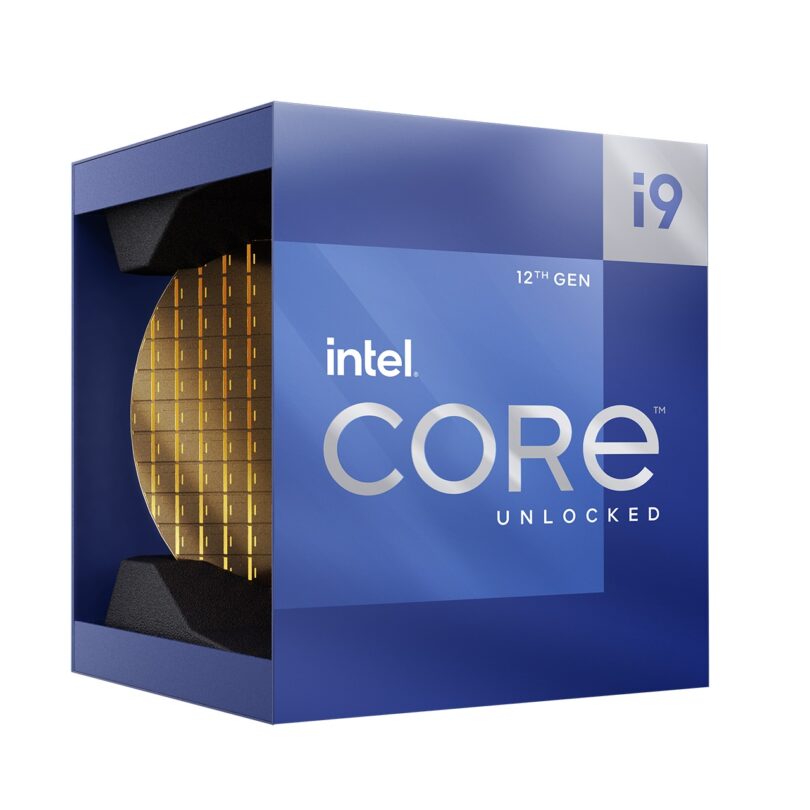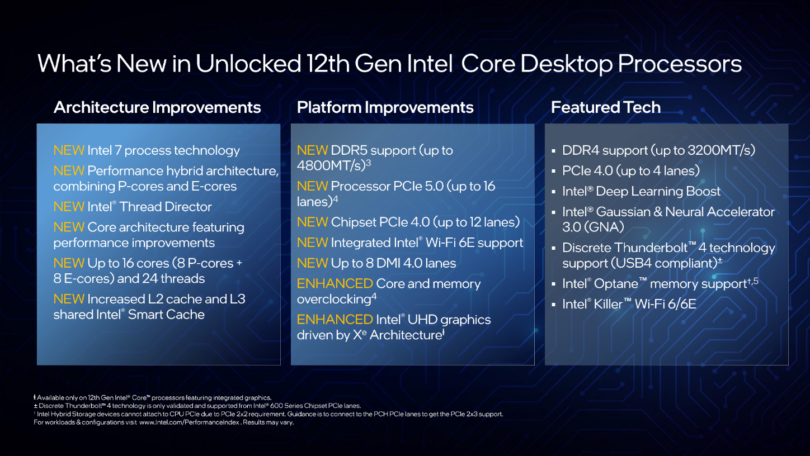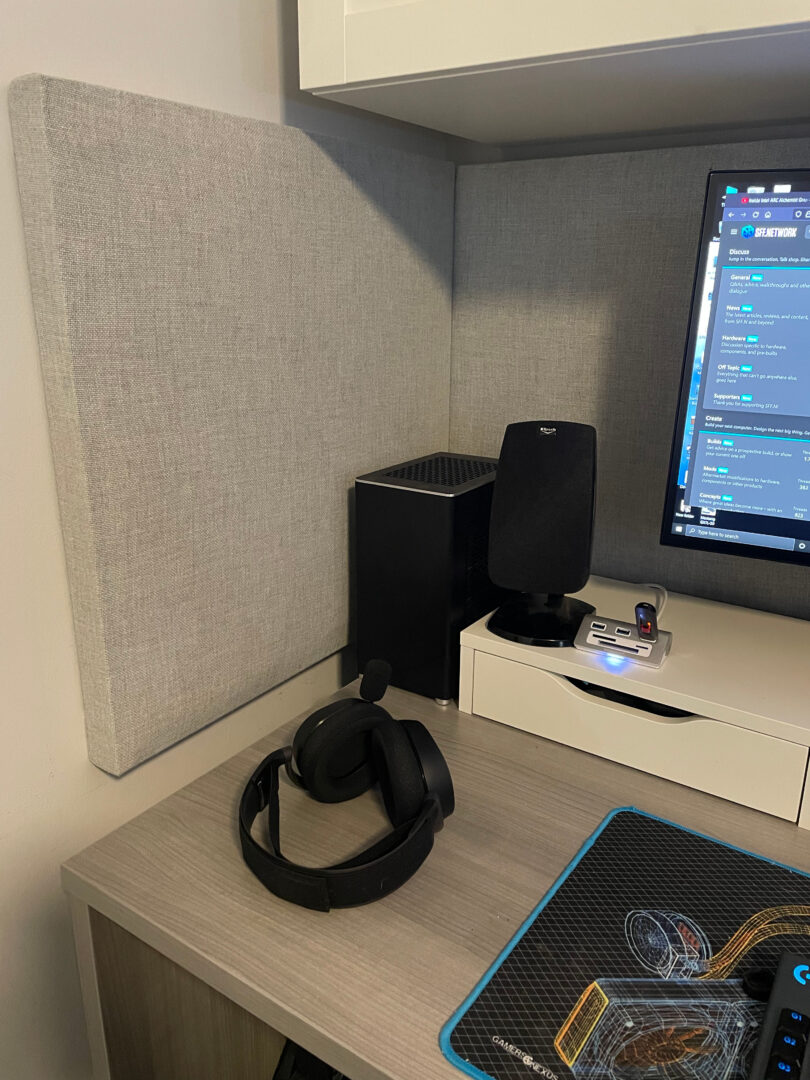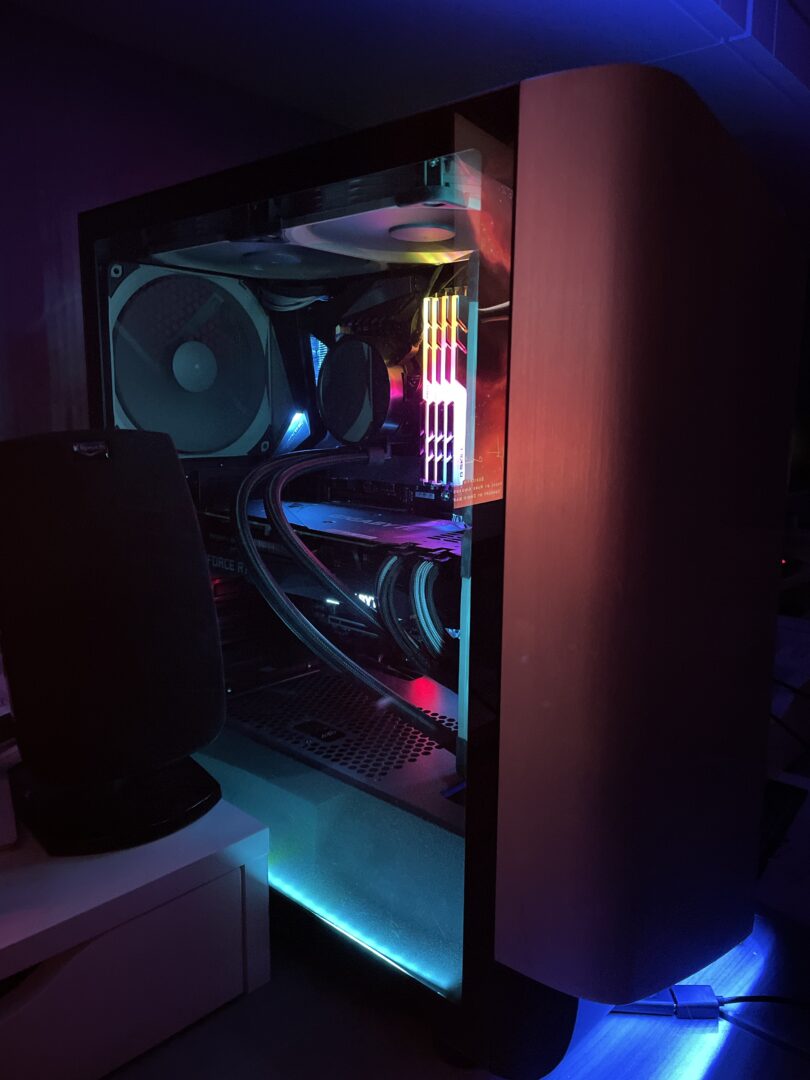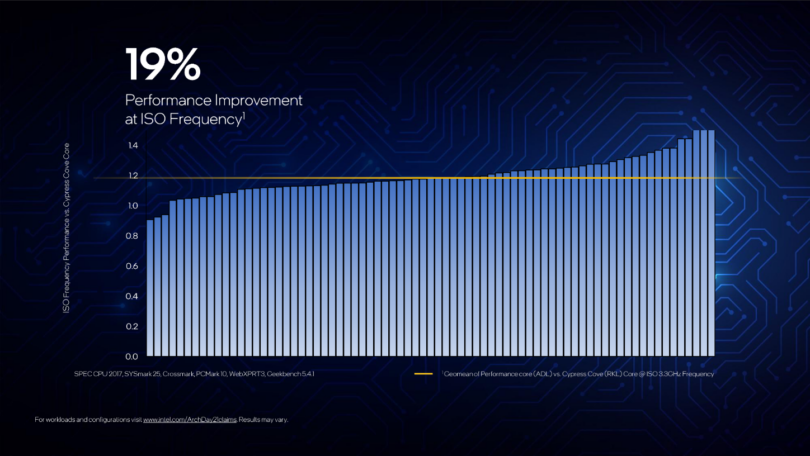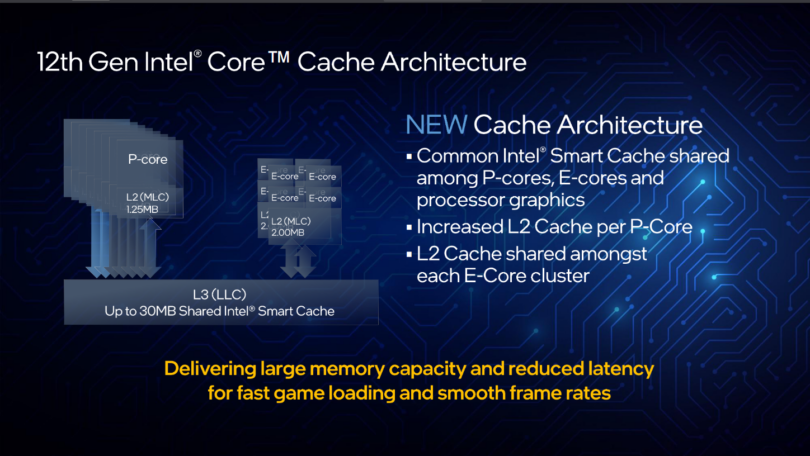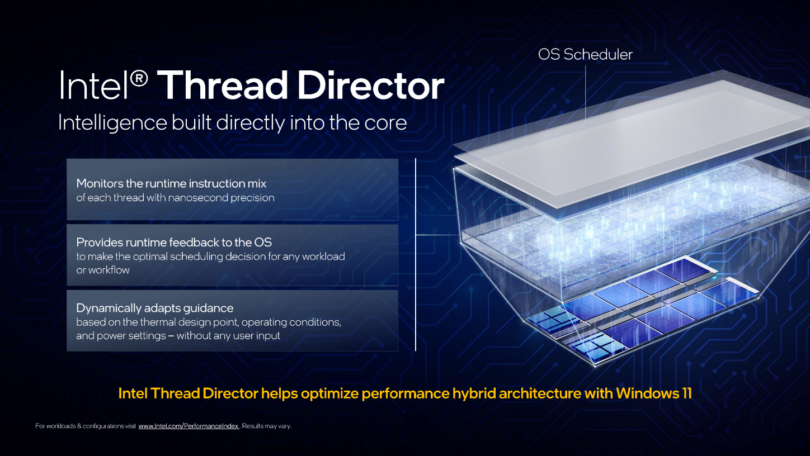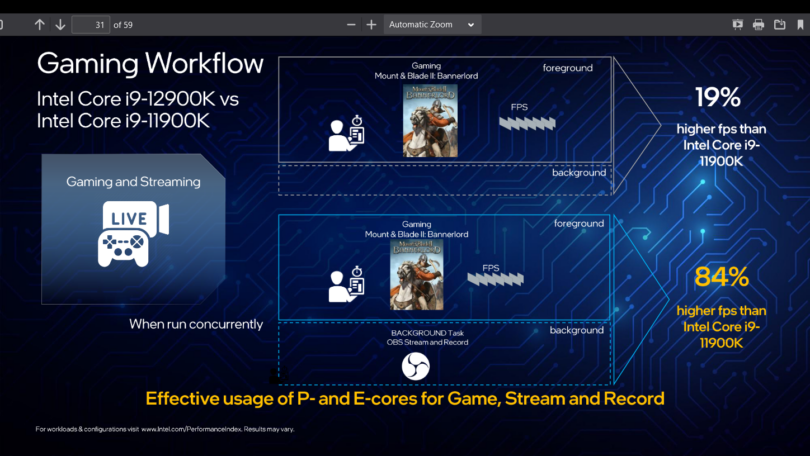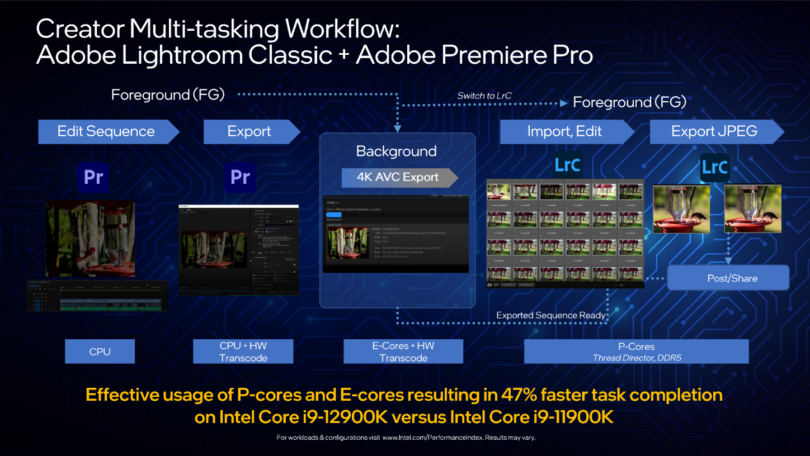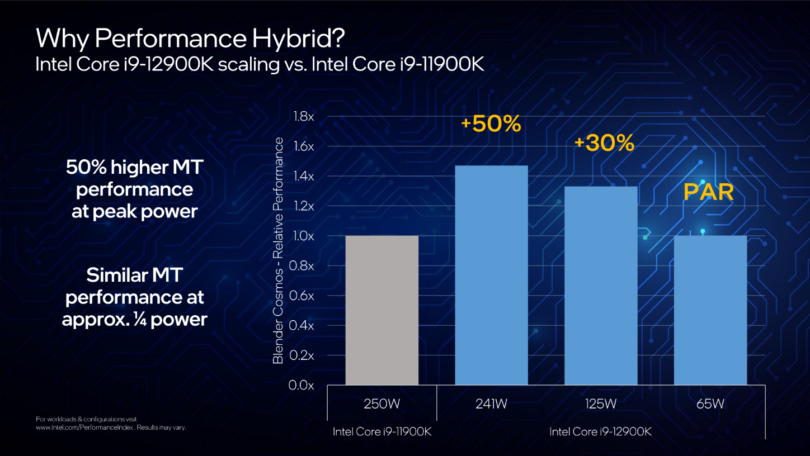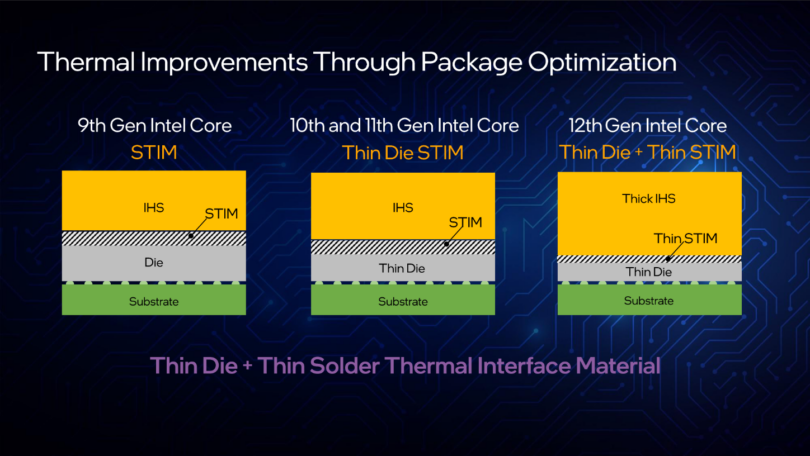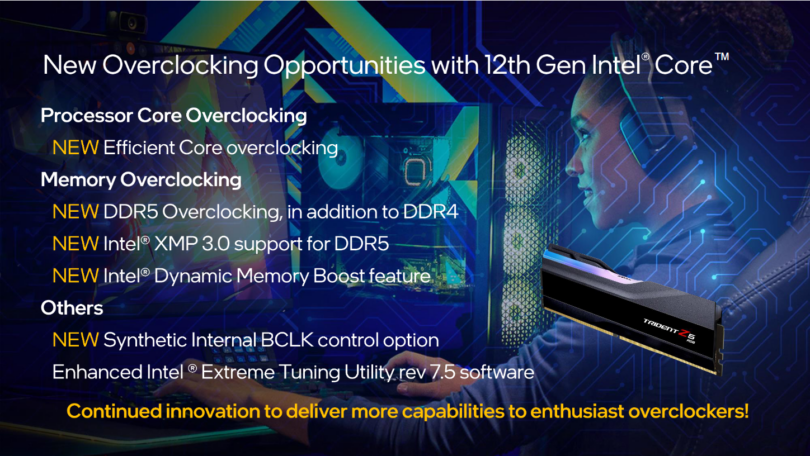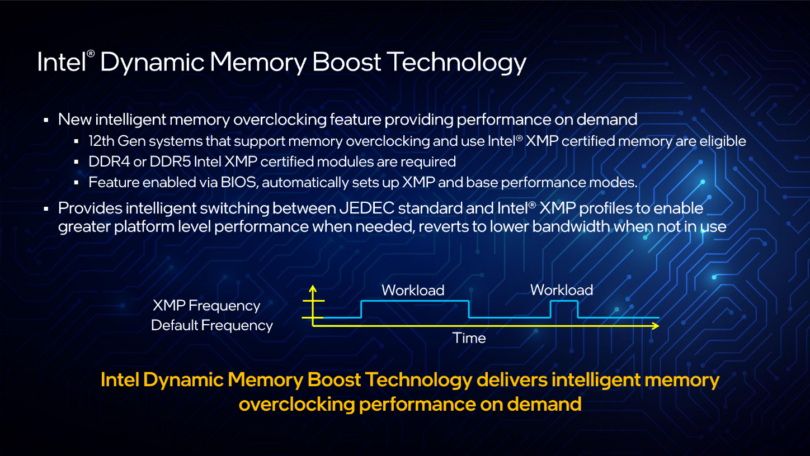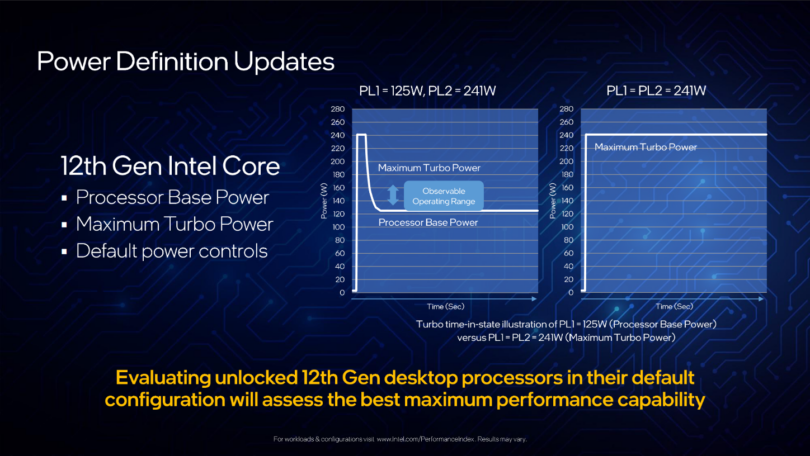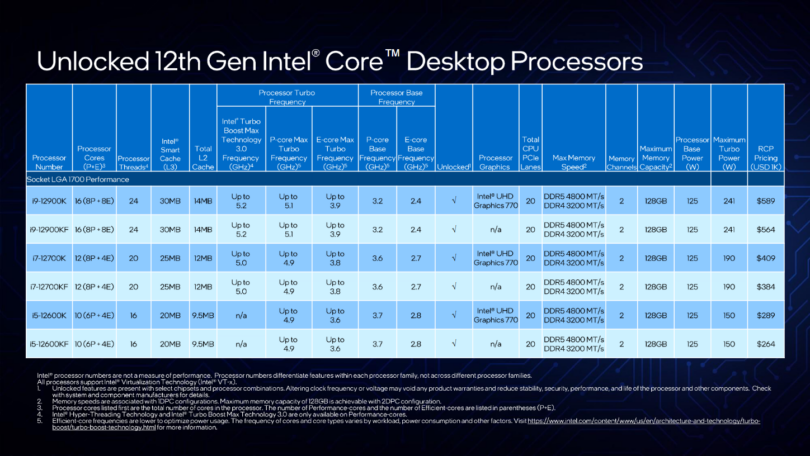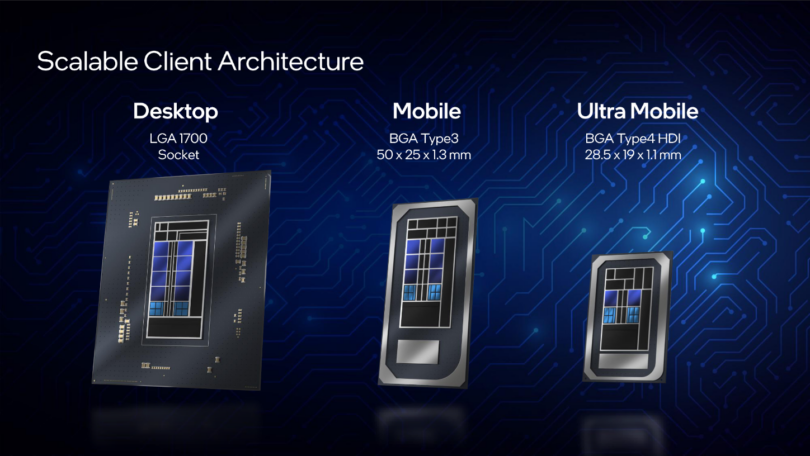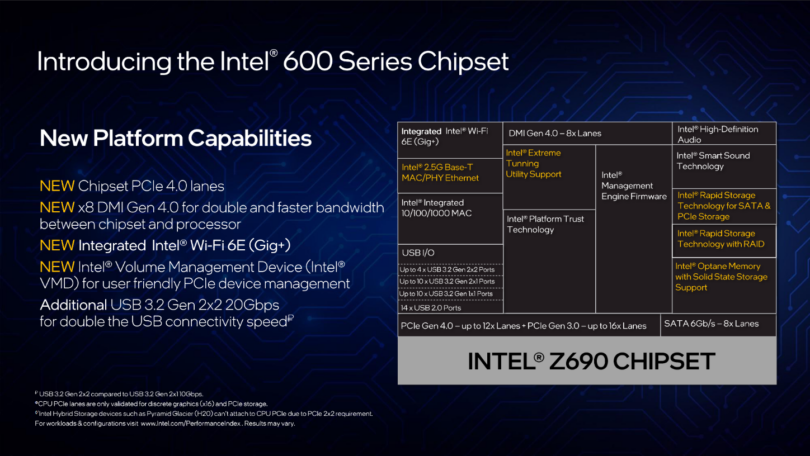It’s been a long time coming. Rumors and whispers have drifted through the news circles, but it has finally been made real…
Intel has announced their 12th generation Core CPUs.
Lets dig in, and see what might be in store of small form factor enthusiasts.
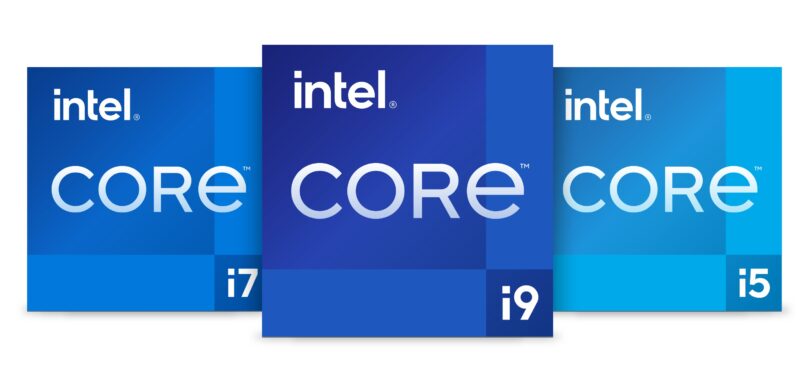
There are a lot of changes coming with this generation of CPUs. We have new core designs, a new platform, new PCIe standard, new RAM, new socket, new-ish process node, and new efficiency gains. It’s as if a decade of changes hit us all at once.
Alder Lake: A Hybrid CPU
The phone you’re probably reading this on likely uses a hybrid CPU design. What this means is that there are two types of CPU cores in the chip. One core is designed for maximum performance, while the other is designed for maximum efficiency. If you’re running a game, it would likely be using the high-performance cores to give you the best experience. However, if you’re just reading a website or sending a text, the chip would run the efficiency cores since those actions don’t require a lot of processing power. This saves a substantial amount of energy, and keeps your phone battery charged longer.
While battery life isn’t something we often think about in the small form factor world, power is. Power usage means heat, and heat is the difference between being able to squeeze your system into the case of your choice or having to redesign your build. Since SFF builds push the envelope when it comes to heat and power, anything that can help reign those issues in is always welcome.
Often times, what we’re doing on our PCs doesn’t need the full power of your processor. Sitting to my right is my Intel i9-9900K full size rig, and to my left is my AMD Ryzen R9-5950X SFF rig. Both can boost upward of 5GHz on a single core, and both can pull quiet a bit of power in doing so. On the stock Windows 10 “balanced” power plan, at idle, the 5950X sits at 57C to 60C pulling a near constant 45 watts. If I manually tune plan to favor power savings, it drops down to about 30 watts and 50C. My 9900K sits at 31C pulling 15 watts on the Windows 10 high performance power plan, albeit with 8 less cores than the 5950X. On the balanced plan, the I9-9900K sits at about 12 Watts of thermal load at idle.
The big difference is that my i9-9900K has a 280mm AIO in a full sized ATX case to cool it, whereas my 5950X has a small Noctua NH-L12S 70mm tall heatsink in a 6.7L SFF case.
The problem is the Noctua-L12S, being a small heatsink with a thin 120mm fan, does not have the thermal headroom to avoid spinning up the fan even at just 30 watts load. This leads to higher fan speeds, increased sudden fan ramping, more general noise, heat, and reduced turbo boost time before the chip pulls back its clocks. The i9-9900K, in its massive case with tons of cooling, can happily sit at 30 watts with the fans barely spinning at all. Moreover, it can maintain higher clocks when under sustained load, while pulling more power, at a lower temperature, and with less noise. The i9-9900K with this setup can pull over 200 watts while running Prime95 AVX, but still stays at 4.7GHz while being relatively cool and quiet. The same workload on the SFF PC has the 5950X pulling its clocks back to 2.8GHz while at its thermal limits, but only pulling 135 watts. I traded performance for size to put the R9-5950X in such a small case.
I could have put the 5950X in the same case as the i9-9900K. It would be running faster and cooler under power virus style loads like Prime95, and also given me more speed in my real-world workloads. It would have been easier and faster to build. But that’s not what I wanted. I wanted a very small SFF PC that pushed the absolute limits. I wanted something that I could carry with me in a backpack. Something that didn’t eat up my desk space with a full tower. Something that gave me tremendous performance, yet was also quiet and simple. Call me smug, but I wanted something that blew away most full sized builds but was small enough to fit the entire computer inside most ATX cases several times over. This is what SFF is all about.
Compared to the set-and-forget ATX case build, in the SFF PC I had to spend a lot more time and effort balancing the heat, power, and fan speed. I had to undervolt, tune fan curves, and dive deep into stability testing. I had to spend hours tuning the system to get the right combination to keep my system quiet at idle, have thermal headroom for burst style workloads, and still not sound like a tornado at load. This is the challenge of small form factor building; power and heat management. It’s one that has haunted enthusiasts for years, and is where Alder Lake 12th Gen cores might just show some substantial benefits to small form factor users.
Step back and think about it for a second; Do I really need 15 watts or 30 watts of CPU power at idle? Most of the time I’m writing, using a small spread sheet, or doing research on the web. I might have a little music playing in the background, or a video playing that I’m half paying attention to. These workloads aren’t very intensive. In fact, these are all things I can do on my phone, and my phone does them with a total TDP of just 6 watts at full load. I don’t need 30 watts of CPU power to do these tasks. This is where hybrid cores come in.
Enter Alder Lake
Inside the new 12th Gen Core series Intel has two types of CPU cores; high performance and high efficiency. Intel refers to these as a P and E-cores respectively.
The high performance core is the meat and potatoes of the chip. They’re built for raw speed, and feature high boost clocks, the latest instruction sets (except AVX512 in consumer models), and a large L2 cache. Intel code names these cores Golden Cove. Intel is claiming that these cores are substantially more power efficient while offering higher performance than 11th gen Core CPUs. How much? Well, the claim is 19% better performance at the same clock speed in raw performance. However, I suggest you take that with a grain of salt until independent testing confirms it.
In addition to a higher IPC than their predecessors, the P-cores feature Hyper-Threading, 1.25MB of a L2 cache each, and can boost as high as 5.2GHz depending on the model.
The efficiency cores are a a different breed. They still support special instructions and X86, but they are smaller and simpler by design. Each four core cluster of E-cores has 2MB of cache shared between them, and can boost up to 3.2GHz form a base frequency of 2.4GHz. They also have a 10 Watt TDP. If it sounds familiar it’s because these designs are a natural outgrowth of Intel’s Atom line of CPUs.
Intel is claiming that while the E-cores are efficient, they can still hold their own performance wise. According to Intel’s Marcus Kenedy, E-cores can offer either the same performance as a Skylake core at 40% less power. Throughput performance from the E-core is also improved. A four core E-core cluster produces 80% more performance than a dual-core Skylake running four threads.
Additionally, while E-cores have far less L2 cache than P-cores, they have access to the 30MB of shared L3 cache.
Keeping it Coherent…
In order to keep the right process on the right core, Intel has integrated a hardware solution called Thread Director. The Thread Director monitors the mix of runtime instructions, and talks directly to the OS on how to schedule processes. It keeps the right process on the right type of core.
The catch is that this optimization is exclusive to Windows 11 and its new scheduler. Additionally, older programs such as DRM for games may need to be optimized to be compatible with the new design. If developers don’t do so, the 12th Gen Core CPUs may have issues running those programs.
Xe GPU and Media Engine
Intel has also integrated the Xe iGPU into the 12th gen Core CPUs. As of writing, it’s very hard to get a GPU due to the lack availability, market demand, and supply shortage. While you might not need the iGPU in the here-and-now, it’s good to have one as a back up. The Xe based UHD 770 should provide passable frame rates in e-sports titles and older games if you keep the settings and resolution fairly low.
Aside from the iGPU, the media engine has also been expanded to cover encoding and decoding of newer video formats. Quicksync can provide a real boost if an application can take advantage of it, and would limit the impact on your dedicated GPU. An example of this would be compressing realtime video for streaming.
Bringing it all together.
Between the P-cores, E-cores, and media engine, Intel has stated there will be a substantial improvement in the multicore performance of the 12th Generation Core CPUs over the 11th Gen, providing the threads are balanced correctly. For gaming, Intel wants the background threads from video capture or stream, and system resources to run on the E-cores and iGPU/Quicksync. This will allow the P-cores to focus on the game engine and performance, while your dedicated GPU focuses on game rendering. Using this method, Intel showed an improvement of 84% in Mount & Blade II: Bannerlord when streaming and recording while playing over the 11th Gen cores.
Using a similar approach as mentioned above, Intel showed was a 47% increase over the 11900K is when using Adobe Lightroom and Premier Pro at the same time. In this case, the E-cores and the media engine are handling a transcode in the background while the P-cores are handling an import action into Lightroom. Once the import is completed, the Thread Director then moves the P-cores back to working on the Premier transcodes. This resulted in 47% faster performance than the 11900K.
All told, Intel is claiming that a 65 watt 12900K can match the multithreaded performance of a 11900K running at 250 watts. If you feed the 12900K nearly the same 250 watts, you get a 50% boost in performance.
How It Effects SFF.
So now you have a basic idea of how Alder Lakes balances workloads. By using the E-cores to reduce power draw, the 12the Gen Core CPUs can run cooler for background and minor tasks. In addition, thanks to the improved multi-threaded performance at a much smaller wattage, performance in some work loads can meet or exceed the last gen CPU while using substantially less power and producing less heat. There is real potential for a return to high-end Intel builds for very small SFF builds. These improvements could mean the difference between a small sub-47mm air cooler and a massive AIO. It’s a big deal.
But that’s not all…
CPU power usage alone doesn’t mean much if the thermal interface material (TIM) between the CPU and the cooler is poor. Take the I7-8700K for example. It’s a good CPU, but a hot one. Believe it or not, it’s actually harder to cool an 8700K than it is a 9900K when both are set for the same wattage. But why?
The 8700Ks thermal interface material, which sits between the chip and the integrated heatspreader (IHS), is a relatively poor paste. It doesn’t transfer heat well to the IHS, and if the IHS can’t give that heat to the CPU cooler, the chip will run hot. The 9900K uses metal solder instead of paste. This is significantly better at transferring the heat. To further this, Intel cut down on the actual height of the CPU die in the 10th and 11th generation Core chips to further decrease thermal resistance. For the 12th gen, Intel is doing even more.
Thin STIM
Intel engineers have not only shrunk the die thickness by a further 25% over 10th and 11th gen Core CPUs, but also reduced the thickness of the solder by 15%. They’re calling this “Thin STIM”. However, now that the TIM and die have been thinned out, the integrated heat spreader has been thickened to cover the height gap. The effect of this remains to be seen, but let’s hope it spreads out the heat a bit more, and gets more of the base plate of the CPU cooler involved.
While the SFF world still pines for the days of direct die cooling, this is a step in the right direction.
Overclocking / Undervolting
To my great surprise, Intel mentioned overclocking a lot during their presentation. We’ve come a long way from them denying it exists to effectively encouraging it. You will still need the Z690 chipset and a K series CPU, but Intel has been very forthcoming about tuning ability.
To this end, Intel has opened up tuning not only to the P-cores, but also the E-cores. Additionally, you can tune the cache frequency, memory frequency, and BCLK frequency. XMP 3.0 is supported for DDR5, as well as dynamic memory boost. Intel has also released a new version of the their Extreme Tuning Utility.
So what does this mean for SFF? Better undervolting.
Recently, I tested the MSI RTX 3060 TI Aero ITX. It’s a very small, single fan, dual slot, GPU that at stock settings sounded something akin to a Boeing 777 turbine. However, with an efficient undervolt, I was able to substantially reduce the power consumption of the chip, and thus the heat. This allowed the fan to spin down, and the boost clocks to rise over stock. In the end, the undervolt was as fast or faster than the stock setting in a lot of applications.
Want another example?
A few years ago, when Coffee Lake was just coming out, I picked up an Intel I7-8700 for a SFF build. I was very disappointed to see that what I thought was a 65 watt CPU could easily push far more power than that while boosting. Moreover, my sustained clocks were disappointingly low due to the thermal issues from the poor TIM solution between the die and IHS. Eventually, I decided to undervolt the chip. The core temperatures dropped and I was able to get more out of my limited cooling. As such the sustained boost clocks rose substantially, and my workload performance got far better. I’ve done the same thing with the AMD 5950X I used to replace it.
Having more finite control will allow advanced users to better tune their SFF builds.
Power Usage
Let’s bring this back a bit. Intel engineers aren’t miracle workers, and they can not defy the laws of physics. Intel, to their credit, is being upfront about the 12th generation Core series power usage.
In the past, Intel would simply state the power used to maintain the base clock of the CPU. This was vestigial way of defining CPU power usage from a time before CPUs could automatically boost their clocks. Many users were disappointed to discover that the cooler they bought that was rated to 65 watts, had no chance of cooling their CPU that was also rated at 65 watts and still get maximum speed. The CPU that was advertised to run at 4.3GHz, was moving at just 3.2GHz. It caused a lot of confusion and frustration. Now, Intel is changing their definitions to help clarify.
Intel will now spec their CPUs at their PL1 (Power Limit 1) and PL2 (Power Limit 2) power states. PL1 is the power rating you see on the box, aka Processor Base Power. This is the power level that the CPU will settle to after a short term burst to PL2. PL2 is the maximum power the CPU will reach at stock settings. All K series CPUs will automatically boost to their PL2 level and stay there by default. If you want it to run at the Processor Base Power, you will have to change the BIOS.
Most motherboard manufacturers have historically already been setting the default power of their higher-end boards to sit at the PL2 level for years. It’s part of the confusion. Now, this is the standard.
Know this: if you plug a K series CPU into a Z690 board, your CPU is going to boost to the Maximum Turbo Power (PL2) by default. If you want a lower setting, you will have to manually set it to PL1 in the BIOS.
If you look at the upcoming i5-12600K mid-range CPU, it has a Processor Base Power (PL1) at 125 Watts. The Maximum Turbo Power (PL2) is 150 watts. What happens if your small air-cooler gets overwhelmed? Are you going to fry the CPU? Nope.
Like all modern CPUs, the 12th Gen Core series will pull power back as it approaches a heat threshold. What it pulls it back to remains to be seen but based on past CPUs, it will likely pull power back enough to stabilize the CPU at 70c to 80C. This is conjecture without testing, and I fully intend to check this once we have a review sample. However, that’s what I’ve seen in past systems.
Pricing and Specs
Intel is positioning the i9-12900K against the AMD R9-5900X. However, that price is dangerously close to the R9-5950X which has 16 full speed cores, and has been shown to tune well for SFF builds. It’s going to be an interesting battle for CPU supremacy this year. Competition is a good thing.
While Intel has only announced six desktop 12th Gen cores so far, they are promising that the Alder Lake design will support everything from high desktop CPUs to ultra mobile ones.
New Chip Means New Chipset: Z690
With the launch of 12th Gen Core CPUs comes the launch of the Z690 chipset. The Z690 integrates quite a few features that SFF enthusiasts will like.
PCIe 5.0: If you’re thinking that there is literally not a single PCIe 5.0 GPU on the market right now, you’re right. However, PCIe lanes are used for far more than just GPUs. They are used for USB ports, M.2 ports, SATA, and even networking. Right now, a high-end NVME SSD tops out at 7,000 to 8,000 MB/s, however, PCIe 5.0 doubles that potential. That means that your PCIe 5.0 NVME SSD storage will actually be faster than the RAM in older DDR3 based systems that many people still use today.
DDR5: The Z690 supports up to DDR5-4800MT/s. Of course, that’s just the officially supported speed, and XMP profiles will be higher than that. DDR5 will feature Dynamic Memory Boost which should allow your RAM to turbo boost more like a CPU.
2.5G Base-T Ethernet standard: It’s about time. Just saying.
Additional PCIe Lanes: PCIe 5.0 lanes will likely be reserved for the highest performance areas of your system. However, the Z690 chipset also includes up to 12x PCIe 4.0 lanes, and up to 16X PCIe 3.0 lanes.
WIFI 6E: Pretty self explanatory, but faster WIFI is always nice.
USB 3.2 Gen 2×2 20 Gbps: This is very important in the SFF world. ITX boards are a set size with no expansion options unless you use bifurcation or the M.2 slots. Still very few users will do that. Having very high speed USB ports will low for fast external capture cards, faster Ethernet adapters, and external NVME SSDs that can rival full speed PCIe 3.0 drives.
Bring it Back to The Real Word
There is a lot of new and exciting technology in these chips. However, let’s get back to the real world. To get the full performance of these chips, they are still 250 watt CPUs. I applaud Intel for admitting this, but it doesn’t change that very small SFF coolers will never achieve the full performance of the 12th Gen Core Series. The exciting part is that Intel is claiming the same performance of the 11th Gen Core series at just 65 watts for the 12th gen. That would truly be something if benchmarks show it to be true, and opens the door for some very high performance SFF systems. The AMD 5600X is my current recommendation for those wanting to use coolers in the 47mm height variety, while still getting excellent performance. This new Core series might just change that as being able to get the full performance of an i9-11900K in 65 watts would be amazing. However, we won’t know until we build it.
Let’s not forget that AMD isn’t sitting around. Intel has had a lot of catching up to do. While they’ve made progress, AMD has Zen 4 waiting in the wings. It will use a 5nm process node, and will be an all large core structure. AMD’s Zen 3 has already shown incredible power efficiency for the performance, and even their 16 Core 5950X can be cooled with a small air-cooler if tuned properly.
The pricing on these chips may also be a hard sell. While there will be Z690 motherboards that support your existing DDR4, how much of the performance improvement in benchmarks is due to DDR5’s performance has yet to be seen. Plus there is the cost of not only the new chip, but also the new motherboard.
Let’s look at what Intel is up against:
Upgrade Scenario: An SFF enthusiast with a Asrock B450 motherboard and Ryzen R5-2600 wants to upgrade. She has a new generation graphics card, 32GB of DDR4-RAM, and NVME 3.0 SSD. Her workload has expanded from just gaming, to games, streaming, and video production.
Intel Upgrade Path: 12900K ($589) + Z690 motherboard ($250 – estimate) + 32GB of DDR5-RAM ($250 – estimate) + new Windows 11 Home OEM ($110) = $1199 or $949 if she gets to reuse the ram.
AMD Upgrade Path: BIOS update (Free) + 5950X ($749) = $749. Maybe even less with sales.
The 5950X is a drop-in upgrade that let’s her keep her existing configuration, settings, Windows, and RAM. The 12900K would require basically a complete rebuild. If all she is doing is gaming, the 12900K may be a bit faster depending on if Intel’s claims pan out, but if she’s doing creation workloads, the 5950X is still going to be the processor of choice. While the Z690 platform would offer a substantial improvement over the B450, most of what is on the B450 is “good enough” that most users won’t need the upgrades for a while. Intel’s 12th Gen Core CPUs will need to offer some very compelling performance and performance to get users like this to upgrade to them.
On the flip side of things, we are the SFF world. If being able to put the full power of a i9-10900K or 11900K in a 65 watt package is true, it might be worth the extra money to upgrade to the 12th Gen core platform. The new features of the Z690 boards might really come in handy. To this end, we’ve requested review units to figure it out for ourselves.
What are your thoughts on this? Please join us in our forums and tell us what you think. We invite everyone from SFF designers to lurkers who have never seen an ITX board to join our community and add to it.

